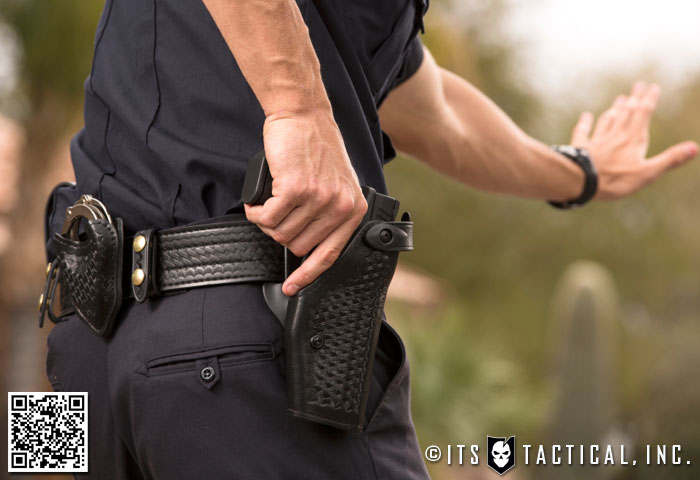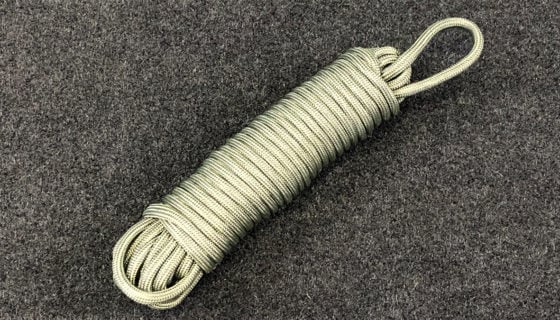Self-Defense Tips for the Unpredictable Nature of Violence
Self-Defense Tips for the Unpredictable Nature of Violence
![]()
In many ways, we’re all beginners in self‑defense. Street violence is chaotic and therefore, cannot be mastered in the way we master an instrument, a tool or a kata. It’s easy to become an expert in a field where changes are minimal.
Because of the unpredictable nature of the sociopath and of violent crime, we, the sentient human beings on this planet, are always the target and we must approach our training with the utmost seriousness and with humility of a beginner.
So this section is for all of us. Included are some of the key points of my behavioral self‑defense research and fundamental points of strategy for street confrontations. Review all these points and be sure you understand them and understand how they work.
S.O.S. (Select Optimum Strategy)
Don’t cry S.O.S., the universal distress code. You are a warrior with a directive and you will survive if you S.O.S. the situation: Select the optimum strategy.
Close Quarter Skills
Know the close quarter form. Develop the muscle memory so that the moves are reflexive and you can concentrate on the strategy. Use your CWCT (closest weapon, closest target) knowledge to protect from the sucker punch and to launch one if needed.
Submissive: Theory and Posture
As a rule, we advocate adopting a submissive posture (hands up ‑ palms out ‑ elbows in.) This suggests compliance to your attacker, which plays to his ego, creating overconfidence that always leads to carelessness.
The submissive posture is also your stance. From this position you can attack or block. Analyze this as you practice verbal simulations and scenarios.
Embrace the fact that 60% of communication is made up of your body language and therefore the stance you adopt or the tension you carry will say more than your words.
Feign Fear to Draw Attack
An opponent who believes you to be afraid of him will make many mistakes. He will enter your personal space, where the hand is much quicker than the eye, leaving him vulnerable to your diverse close quarter arsenal.
Drawing on the theory of body language, it’s often useful to “feign fear” to lull your opponent into the close quarter range.
Use Choice Speech to Defuse
I assume you would prefer not to experience violence and therefore your directive should be avoidance and de‑escalation. Therefore, your speech and body language (non‑violent posture, submissive stance, etc.) must follow suit. Use choice-speech to achieve a settlement. Employ emphatic words. Listen intently. Don’t oppose. Flow and blend. Negotiate.
The way you speak along with your body language will strongly influence the outcome of most confrontations. This is why the “directive” is so important. Your intention and dialogue must be congruous.
We have an expression: “Those who talk can be persuaded to walk.” Never assume that you’ll be able to talk the opponent down though. Always be ready for the sudden attack. Monitor his body language and look for signs of escalation (heavy breathing, shifting eves, twitching fingers, encroachment, abusive language, etc.). If your choice-speech is working, you’ll know it, as the situation will be calming gradually.
The Hand is Quicker Than The Eye
Actually, the hand is quicker than the foot and the eye. The closer your opponent is to you, the easier it is to strike successfully. Naturally the same goes for him, so be on guard. If you employ the body language theories along with choice speech and you utilize “first strike” theory with the CWCT concept, you control the situation.
As I mentioned, many martial artists preach a safe zone (outside kicking range) for street confrontations. This is easier said than done and the verbal command (note how “command” strikes an emotional nerve ‑ this is a demonstration of choice speech) necessary to keep an opponent away, combined with the aggressive body language to support the command, might only serve to escalate and antagonize.
If the alleged attacker is a “paper tiger,” he will be successfully defused with the peaceful, submissive approach. If the “command” fails, you’ve telegraphed your training and have lost the psychological element of surprise. Think about this deeply. It’s a critical point and misunderstood by many experts.
Lead With Speed
Always strike with speed first. Get your opponent’s nervous system jumping and then move in and finish the task. This may sound obvious, but, in an effort to get things over quickly, many martial artists and street fighters launch the telegraphic “hay maker” or power strike. Think speed.
Hit in “Threes”
Never strike just once. The most effective combinations utilize a broken rhythm which is most easily achieved by working in groups of threes.
Also, as martial artists, we have a tendency to strike once and observe. This is the result of our one‑punch‑kill beliefs, practicing with robotic “one-step sparring” and other “sport” drills.
In the street, things can happen so fast that your initial strike may have little effect other than to startle your would‑be attacker. Your second shot might miss simply because the attacker has suddenly moved to cover or counter. It’s your third shot that logically could do the most damage. Practicing this way also helps break your attachment to the one‑punch‑kill program.
If my theory is wrong and your attacker goes down right away ‑ great. If it’s the second shot that drops him ‑ great. You see what I’m saying? This is another “overkill” principal.
Closest Weapon/Closest Target (CWCT)
Often in a street situation, we are encumbered with so many choices and emotions that thinking clearly is like trying to learn Latin. Let me simplify your tactical dilemma: No matter how you are standing (lying, sitting) you have several natural weapons at your disposal. Your opponent, conversely, has targets in direct line with your weapons. You two are synched. Identify with this and work on this theory. It makes things happen fast.
I like to remind my students that the height of strategy is not in doing their favorite move, but rather, the worst move for their opponent. Therefore, the worst thing you could do to your opponent is to strike him suddenly, in the most unpredictable place and then follow‑up the surprise attack.
First Strike Theory
Use the CWCT theory to determine your opponent’s first strike potential. Identify it and determine your logical response to this attack. Once you have identified his CWCT, anything else he does will appear slower. Do you understand?
If you figure out the most logical, sudden attack your opponent could launch and you physically and mentally identify and prepare for it, then any other attack is slower and therefore, more telegraphic. This must be analyzed and then experimented with to be useful.
Stun And Run
As soon as you can, get the hell out of there!
Stay safe,
Tony
Editor-in-Chief’s Note: Tony Blauer is a world renowned combatives instructor and the developer of the SPEAR System. His philosophy and mission has remained constant since 1979, always searching for a better way. Not trying to perpetuate a style; instead to educate an international community on the importance of psychology, fear management and behaviorally sound tactics.
His company, Blauer Tactical Systems (BTS) along with his Personal Defense Readiness (PDR) team continues to research and evolve personal and professional safety training and products. Tony has also recently partnered with CrossFit to develop CrossFit Defense, promoting the parallels between the CrossFit philosophy and the SPEAR System.











Discussion